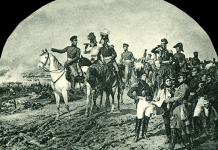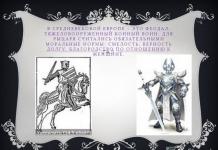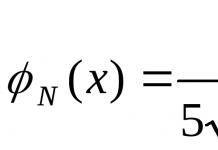The Pole Wladislaw Sikorski became famous thanks to his participation in the struggle for national independence during the First World War. He managed to combine military service and bright political career. After the occupation of Poland by the Third Reich, Sikorski became chairman of the government in exile. He died in a plane crash, and its circumstances became the basis for many conspiracy theories.
Early years
The future Polish politician and military leader Wladyslaw Sikorsky was born on May 20, 1881 in Tuszow-Narodow, a small village in Galicia. The region then belonged to Austria-Hungary, although its population was mainly Slavic. The boy graduated from high school in Lvov (Lemberg) and entered the local polytechnic institute. At this time, Poland was divided between Russia and the Habsburg Empire. Therefore, it is not surprising that Vladislav Sikorsky became an active participant national movement. In Lviv, he took part in the creation of Polish liberation organizations.
In 1908, the young man joined the Union of Active Struggle. He was elected chairman of the Polish paramilitary organization Strelets. While anti-Austrian sentiment was growing in Galicia, Europe was inevitably approaching the First World War. In 1914, a Serbian terrorist shot and killed Austrian heir Franz Ferdinand. This event became the reason for the start of a war that engulfed the entire Old World. Austria-Hungary and Russia were different sides barricades The Poles, whose lands were divided between these powers, began to prepare for a war for their own independence. Vladislav Sikorsky turned out to be one of the most active figures in this liberation movement.
Struggle for independence
After the unsuccessful offensive of the Russian army, the Central Powers occupied the western provinces that belonged to Russia. Among these lands was the Kingdom of Poland - Polish autonomy within the empire.
In 1916, Sikorski Wladyslaw became a supporter of Germany and Austria-Hungary, beginning to agitate for the creation of a nation state with the support of the Central Powers. This position brought the military leader into conflict with the nation's leader, Józef Pilsudski, who believed that Poland should shun the patronage of its neighbors.
Allied with Germany
Nevertheless, in 1916, Sikorsky’s project was actually implemented. On November 5, an act was signed according to which Germany and Austria-Hungary recognized the new Kingdom of Poland. This state turned out to be a satellite of its powerful neighbors.
The Germans did not care about Polish independence, they only wanted to enlist the support of the Poles in the fight against Russia. Nevertheless, for some time Vladislav Sikorsky remained a supporter of Germany and Austria, hoping for their support in creating an independent state. In 1916-1918 the military leader was engaged in recruiting Poles into the army of the Central Powers.

In the new Polish army
On November 11, 1918, the Polish militia in Warsaw disarmed the German garrison. Germany had just lost the First World War, after which a revolution began. Under such conditions, German protection could not be maintained in Poland under any circumstances. A few days after the above-described episode, Józef Pilsudski arrived in Warsaw and became head of state. In the same November, Wladislav Sikorsky was appointed chief of staff of the army in Galicia.
Although the first world war ended, Poland had yet to achieve peace on its territory. Soviet Russia became a threat to the country. The Bolsheviks, establishing their power on the ruins of a collapsed empire, considered Poland to be theirs by right. The war between neighbors began in January 1919. Lenin saw this campaign as initial stage world proletarian revolution. Gradually, after the successive defeat of white groups on different fronts, the Red Army concentrated all its forces in the western direction.

Against the Bolsheviks
With the start of the war against Soviet Russia Polish military leader and politician Sikorsky Wladyslaw went to the Polesie group of forces, where he became commander. He had to organize an army from scratch. did not have a single control center and clear structure. The authorities simply have not yet had time to transform the volunteer detachments into a normal army. Poland had to enter the war literally with bare hands.
And yet, after it became clear that the Bolsheviks were real threat, the army was quickly organized and equipped. Vladislav Sikorsky made a huge contribution to this success. Biography of this person - shining example biography of a military leader who tried himself in a variety of capacities in staff and field work. Therefore, it is not surprising that the leadership of the new state considered it appropriate to entrust him with conducting several operations.

Kyiv operation
Sikorsky was assigned to Army Group Polesie in August 1919. For some time, its units stood motionless in the vicinity of Minsk. Then Mozyr was taken. The Red Army tried to recapture the city at least four times, but without success. In April 1920, the military leader took part in the offensive Kyiv operation with the aim of capturing the Ukrainian capital, occupied by the Bolsheviks. The attacks were carried out on the border section from Olevsk to Mozyr. In this operation, the Poles were supported by a 15,000-strong army
On April 28, the Polesie group as part of the Polish Army found itself on the line Vinnitsa - Kazatin - Chernobyl. Over the next 24 hours, she marched another 90 kilometers and ended up on the outskirts of Kyiv. Throughout this route the Poles did not encounter any resistance. Soviet military leader Sergei Mezheninov withdrew his troops, fearing a direct clash with the enemy who had gained momentum.
Vladislav, together with his colleagues, entered Kyiv on May 8, 1920. However, this success was temporary. Already on May 14, the Red Army under the command of the “demon Civil War“Mikhail Tukhachevsky launched a counter-offensive, because of which the Poles had to hastily retreat. On June 5 the front was broken through. On the 12th, the Red Army soldiers entered Kyiv. On August 6, the Polesie group was disbanded. Sikorsky began to command the 5th Army.

Warsaw operation
Tukhachevsky's counterattack forced the Poles to retreat. Army after army surrendered more and more cities. In this stream there were also units commanded directly by Vladislav Sikorsky. The military leader, however, did not give up and was preparing for a decisive confrontation with the Bolsheviks.
At the most crucial moment, when blood was already flowing in the vicinity of Warsaw, his 5th Army stopped the enemy north of the capital. Tukhachevsky's forces were stretched too thin and became vulnerable to Polish attacks. Sikorsky's army took advantage of this and broke through the Bolshevik ranks, advancing several kilometers. On the decisive night of August 15, divisions under the command of Lucian Zheligowski came to her aid.
This success allowed the commander-in-chief to better prepare for the upcoming counter-offensive, which was supposed to rid Poland of the “red plague”. Sikorsky's contribution to the salvation of Poland was enormous. He was awarded the most honorable national military order - "For Military Valor". In April 1921, he replaced Piłsudski as Commander-in-Chief of the Army and Head of the General Staff.

Peaceful years
With the advent of peace, Sikorsky became involved in politics. In December 1922 - May 1923. he occupied the chair of Prime Minister and at the same time acted as Minister of the Interior. The government under the leadership of Sikorsky was able to get Western countries to recognize the borders established after the won war with the USSR. Western Ukrainian and Belarusian regions were annexed to Poland.
Since 1928, Sikorsky lived in exile in France. The departure was due to the fact that the politician was one of the most active critics of the then government. The military man spent his years in France for a reason - he entered the Higher military school. Sikorsky's premonition did not deceive him. Peace in Europe turned out to be short-lived.

World War II
When Nazi Germany attacked Poland in 1939, Vladislav Sikorsky, who lived in exile, tried to get an appointment to the front from the country's leadership. These efforts ended in nothing. At the same time, the formation of a Polish army in exile began in France. Vladislav Sikorsky began to lead this process in Paris. The Pole did everything he could while his country was rapidly approaching defeat.
Just a month after the start of the war, Sikorski became prime minister in the government in exile. Under his leadership, an 84,000-strong Polish army was created in France. When the Third Republic came under attack from the Germans, Sikorsky's troops tried to stop the aggressors. After the defeat of France, both the Polish government and the remnants of its troops moved to England.
When Germany attacked the USSR, Sikorsky went to resume diplomatic relations With Soviet Union. The normalization of relations was short-lived. Soon the Germans, who occupied part of Soviet territory, published information about the Katyn massacre. The news of the brutal massacre of Polish prisoners by NKVD officers led to another break. Sikorsky began to persuade Churchill to stop cooperation with the USSR. A few weeks later, on July 4, 1943, the exiled Prime Minister, along with his daughter, died in a plane crash near Gibraltar. The unexpected death was the final chord in the life of the politician. The rest of his biography was just as changing and full of sharp turns. Vladislav Sikorsky and his death still cause a lot of controversy. The Pole was buried in England in the presence of Churchill. Dust national hero transported home in 1993.
The Mystery of the Gibraltar Disaster
+++++++++++++++++++++++++++++++
70 years ago, the Commander-in-Chief of the Polish Army, General Wladyslaw Sikorski, died in a plane crash over Gibraltar. The causes of the accident are unknown to this day. The investigation into this case is being conducted by the Institute of National Memory, trying to answer the question of whether the disaster was an accident or an attempt.
On July 4, 1943, at 23:07, 16 seconds after takeoff from the airfield of the British base at Gibraltar, Liberator II AL523 crashed into the sea. All passengers were killed, among them General of Armor (1) Wladislav Sikorski - Commander-in-Chief of the Polish Armed Forces and Prime Minister of the Government in Exile.
The general was returning after conducting an inspection of Polish troops in the Middle East, Dr. Kazimierz Śliwiecki, a historian of World War II working in Great Britain, tells the portal polska-zbrojna.pl. Together with Sikorski, 16 people died, among them his daughter Sofia Leniowska, Brigadier General Tadeusz Klimecki - Chief of the General Staff, Colonel Andrzej Marecki, Chief of the Operations Department of the General Staff and Lieutenant Jozef Ponikiewski ), - adjutant of the general. Only one person survived - Czech pilot Eduard Prchal. The body of the general's daughter and four other persons was never found.
According to the official version of the British commission that investigated the incident in 1943, the cause of the disaster was the blocking (jamming) of the elevator, but it never explained how or why this happened. The general's remains are buried in the cemetery of Polish pilots in Newark, England (2). In 1993 moved to Wawel (3).
This disaster is one of the unsolved mysteries of World War II, says Dr. Slivetsky. Since the reasons for the death of the plane have not been established, there are a huge number of versions among historians, researchers and journalists regarding the death of the general. It talks about a pilot error, a plane crash and an assassination attempt, which could have been behind either the Soviet government, the British or members of Polish emigration factions hostile to Sikorsky. According to the authors of these versions, the general - a supporter of an international investigation into the crimes in Katyn - prevented the British, Poles and Russians from establishing mutual cooperation.
One of the most famous versions was voiced by Dariusz Baliszewski, a journalist and historian. The film "The General - Assassination on Gibraltar" was based on it. According to the filmmakers, the Polish prime minister was killed in the palace of the governor of Gibraltar by the British or Poles who were hostile towards him. “Then the British authorities, in order to hide the crime, created the appearance of a plane crash,” the film explains. Its authors believe that Sikorsky’s daughter, with the consent of the British, was captured by the Soviets and it is for this reason that her body was never found.
This version seems very far-fetched to me, at least in the light of the Institute of National Remembrance’s own research (INR), states Dr. Slivetsky. For 5 years now, the INP has been working to unravel the circumstances of the general’s death. As part of the investigation, the remains of Sikorsky and three officers who died with him were exhumed: General Klimetsky, Colonel Maretsky and Lieutenant Ponikevsky.
Forensic doctors stated that all of them died as a result of numerous injuries to various organs, which is typical for victims of transport accidents. - Accordingly, we can discard versions based on the assumption that the murder of the general could have been committed before the departure, and exclude hypotheses about the earlier murder of the general from firearms, his strangulation, death from stab wounds, cuts, chopped wounds or poisoning - lists the investigating prosecutor Marcin Golenbiewicz (Go;;biewicz), head of the Commission for the Investigation of Crimes against the Polish People of the IPP department in Warsaw.
INP prosecutors are now investigating whether the crash over Gibraltar was an accident or we're talking about about sabotage. By the way, two witnesses were interviewed in Great Britain and Spain: the radiotelegraph operator of the British rescue ship, which participated in removing the body of the Polish prime minister from the water, and the scuba diver who retrieved the remains of the victims from the plane. Investigators sifted through British archives. “We have no reason to doubt that there are any documents that we could not familiarize ourselves with,” explains prosecutor Golenbevich, thereby refuting press speculation that the British authorities have classified acts relating to Sikorsky’s death. He also adds that no reliable evidence has been found that Sofia Lesnevskaya survived the disaster.
Our investigation is guided by facts and evidence, collected material will allow us to most fully explain all the secrets of the death of General Sikorsky, the prosecutor believes. For now, he would not like to talk about this topic in more detail, but he promises: “The investigation is still underway, and we will report on its results in the coming weeks.”
1 - Colonel General
2 - near Nottingham (Nottinghamshire). On September 17, 1993, the general’s ashes were transported to Poland and buried at Wawel in Krakow.
3 - Wawel - a hill 228 m high above sea level and an architectural complex in Krakow, on the left bank of the Vistula. A symbol of Poland and a place of special significance for the Polish people. The complex is located on Wawel Hill architectural monuments, of which the most important are the Royal Castle and the Cathedral of Saints Stanislaus and Wenceslas (Bazylika archikatedralna;w. Stanis;awa i;w. Wac;awa).
Born on May 20, 1881 in the village of Tuszow-Narodowy in the Subcarpathian Voivodeship in Galicia on the territory of Austria-Hungary. He studied in Rzeszow and graduated from high school in Lviv. In 1902 he entered the Faculty of Roads and Bridges of the Lviv Polytechnic Institute. In 1908, Sikorsky became one of the founders of the Lviv Union of Active Struggle, then in 1910 - chairman of the local paramilitary union of Polish citizens "Strelec". Since 1914, a member of the Galician Main People's Committee, since 1916, head of its military department. During this period, a serious conflict began between him and Józef Pilsudski: unlike Pilsudski, Sikorski advocated the re-establishment of the Polish state under the auspices of Austria-Hungary. In 1916-1918, Sikorsky was involved in the recruitment of Poles into the Austrian army.
Since November 1918, Wladyslaw Sikorski has been part of the Polish Army: chief of staff of the military groups "East" in Galicia, commander of the "Bartatow" group and the "group of Colonel Sikorski".
During the Soviet-Polish War of 1919-1921, Vladislav Sikorsky commanded the 9th Infantry Division and the Polesie Group of Forces in the Kyiv Operation, the 5th Army in the Warsaw Operation, and the 3rd Army in the battles for Zamosc. During the Battle of Warsaw, units under the command of Sikorski managed to stop the Bolshevik troops north of the Polish capital, which gave Pilsudski time to carry out a victorious counter-offensive operation. For his participation in the Battle of Warsaw, Sikorski was awarded the most honorable Polish military order, the Virtuti Militari. In April 1921, Sikorski replaced Józef Pilsudski as Commander-in-Chief of the Polish Army and headed the General Staff.
Prime Minister
On December 16, 1922, after the assassination of President Gabriel Narutowicz, Marshal (Chairman) of the Sejm Maciej Rataj proposed the candidacy of the Commander-in-Chief of the Polish Army, Wladyslaw Sikorski, for the post of Chairman of the Council of Ministers, simultaneously acting as Minister of the Interior. Sikorsky held this position until May 26, 1923. The Sikorski government managed to restore internal stability and achieve recognition of the Polish eastern borders from Western countries.
As part of the Polish Army
In 1923-1924, Sikorsky was the Inspector General of the Infantry. In 1924-1925, Sikorski was Minister of War in the second government of Wladyslaw Grabski. In 1925, he headed the 6th district of the Polish Army in Lviv. Another conflict with Józef Piłsudski forced him to leave this post in 1928.
May coup
During the May Revolution of 1926, Sikorski did not leave the command of the military district in Lvov, but did not provide any assistance to the government, which made the task much easier for the rebels led by Józef Pilsudski.
Best of the day
In 1928 he emigrated to France, where he was in opposition to the Polish government. Until 1939, he was at the disposal of the Minister of War, without holding any official positions. He studied in France at the Higher Military School.
World War II
World War II began on September 1, 1939, with the attack of Germany and Slovakia on Poland. With the outbreak of the war, General Sikorski tried to get Marshal Edward Rydz-Smigly to assign him to the front, but received no answer. He went to France again, where on September 28 he began forming the Polish army in exile.
On September 30, 1939, Sikorski became prime minister of the Polish emigration government (and remained so until his death in 1943). On November 7, by decree of the President of the Polish Republic, Sikorski was appointed Inspector General (Commander-in-Chief) of the armed forces. The army he created in France numbered 84 thousand people. After the German invasion of France, the Poles, along with the French and British, actively participated in the battles. After the defeat of France, the surviving Polish units crossed to England at Dunkirk and on September 5, 1940 joined the British armed forces
Anders Army
After the German invasion of the USSR on July 30, 1941, Sikorsky signed with I.M. Maisky, the Soviet ambassador to England, an agreement with the USSR on the resumption of diplomatic relations and a pact on the creation of a Polish army in the East. In 1941-1942, he participated in the creation of the Polish Army of Anders, which was formed in the Buzuluk area and subsequently transferred to the Middle East.
However, soon the discovery and publication of the Katyn burial site by the Germans led to Sikorsky’s break with Moscow. In April 1943, these relations were formally severed by Stalin's government after Sikorski demanded an investigation into the Katyn massacre of Polish soldiers.
Atlantic disaster
In connection with the facts of the Katyn execution that were discovered in April 1943, Sikorsky made sharp accusations against the USSR, in particular demanding that Churchill sever relations with the USSR. A few weeks later, General Wladislav Sikorsky and his daughter Sophia died in a plane crash on July 4, 1943 near Gibraltar. Some modern historians argue that this most likely was not an accident. An English pilot who had never worn a life jacket put one on on this particular flight and survived. The incident, which has not been fully clarified, has given rise to many rumors, guesses and versions. In November 2008, his body was exhumed and checked by Polish experts in order to confirm the version of the involvement of Soviet intelligence services in his death, but no facts were discovered. You can read about who is really guilty of the death of General Sikorsky in the book by G. Douglas “Gestapo Chief Heinrich Müller. Recruitment conversations." The general was buried with honors in the presence of British Prime Minister Winston Churchill in the cemetery of Polish pilots in Newark near Nottingham (Nottinghamshire). On September 17, 1993, his ashes were transported to Poland and buried at Wawel in Krakow.
Awards
Order of the White Eagle,
Commander's Cross with Star of the Order of Virtuti Militari
Silver Cross of the Order "Virtuti Militari"
Order of the Cross of Grunwald, 1st class (2.VII.1946)
Knight Grand Cross of the Order of the Renaissance of Poland
Commander of the Order of the Renaissance of Poland
Cross of the Brave
Golden Cross of Merit
Knight Grand Cross of the Legion of Honor
In July 1943, a plane carrying the head of the Polish government in exile, General W. Sikorski, and his retinue, crashed over the sea near Gibraltar, who shortly before, after news of the Katyn massacre, broke off relations with the leadership of the USSR. Only the pilot survived. It is still not clear who is to blame? But there are versions of what happened.
The reader is probably disappointed. Arthur Douglas Dodds-Parker, the changer world history in favor british crown in the Czechoslovak and French chapters of the cycle “Their Struggle”, he never appeared in its Spanish part. However, do not rush to conclusions. Not all the interests of good old England have been respected yet, not all of its opponents have been defeated, which means that it is too early for Sir Douglas to leave the pages of the Bohemian Manuscripts. The series in this series are interconnected a large number threads than it might seem at first glance. To continue the story, I will have to return to the Czechoslovaks. More precisely, to bring another Czech onto the stage, who until now had remained in the shadows.
Eduard Maximilian Prhal was born in 1911 into the family of the owner of a funeral home in Dolní Břežany (this village is located near Prague; now almost four thousand people live there, at the beginning of the last century there were about eight hundred). In 1930, Prhal entered military aviation, graduated from non-commissioned officer school, mastered all types of aircraft in service with the Czechoslovak Air Force and spent over a thousand hours in the air. In 1937 he retired and flew another 1,200 hours as a pilot for the Batya company. After the occupation of Czechoslovakia by the Germans, Eduard Prhal went to France through Poland and on September 2, 1939 was accepted into the French aviation. During the Battle of France, he shot down three German planes, and on June 22, 1940, he managed to evacuate to England (by the way, the surname Prhal literally means “Run”).
Eduard Maximilian Prhal as pilot of the Czechoslovak Royal Squadron air force during the Battle of Britain.
During the Battle of Britain, Prhal served in a fighter squadron, shot down three more Germans and was himself once shot down over the English Channel, but survived. He then transferred to transport aviation and in 1942 participated in the night supply of Malta. Finally, Prhal was transferred to the 511th Transport Squadron, which specialized in transporting VIPs. Of particular significance was that this Czech became one of five British pilots who had the right to take off and land at night in Gibraltar.
At the end of June 1943, Prhal received orders to transport the Prime Minister of the Polish government in exile, General Władysław Sikorski, to Britain on an inspection tour of troops stationed in the Middle East. On July 3, Prhal and Sikorsky arrived from Cairo to Gibraltar. On July 4, 1943, at 11:07 p.m., Eduard Prhal took off a Consolidated B-24 Liberator aircraft, carrying Prime Minister Sikorsky and his entourage. The flight lasted 16 seconds, after which the Liberator crashed into the sea. Of the seventeen passengers and crew members, only Prhal survived. He was found unconscious in the ocean, wearing a life jacket (before that, he was known as a man who, out of superstition, never put on a life jacket before flying).
Prhal spent two months in the hospital, and immediately after discharge he married Dolores Sperkova, a British intelligence officer of Czech origin. Under the Royal Air Force, a structure was created called WAAF (Women's Auxiliary Air Force). The corps consisted of 180 thousand women involved in laying parachutes, maintaining radars, providing telephone and telegraphic communications, encrypting and decrypting messages, collecting and analyzing intelligence, etc. Dolores Sperkova served in WAAF intelligence.
Left: Eduard Prhal, RAF pilot. Right: his wife Dolores Sperkova, known as Dolly S., WAAF officer
Prhal continued to serve in 511 Squadron, and after the war, together with Dolores, he returned to Czechoslovakia, where he got a job as a pilot for Czechoslovak Airlines. But in 1948 the communists came to power. It’s even difficult to coexist with the Reds ordinary people, and the veterans of the non-communist Resistance after the Victorious February began to have special existential problems, including imprisonment and execution. On September 30, 1950, Prhal and two other former royal pilots - Kautsky and Rzechka - stole a transport plane and flew on it to England (there were eight of them together with their families). The hijacked plane was piloted by Prhal.
In 1952, our hero moved to the United States and began to make a living by teaching Czech at a military school. He ended his career as a librarian in San Jose, California, and died in 1984. He lived a very eventful life, but he went down in history not because he served in the aviation of three states, shot down six enemy planes and flew through the Iron Curtain, but because he piloted the plane on which Sikorsky died.
It was one of those deaths whose causes are clear to everyone, but cannot be officially recognized. Hardly anyone has any doubt that the British liquidated Sikorsky because of the Katyn affair. In April 1943, German radio reported that a burial place of thousands of Polish officers shot by the NKVD had been discovered near Smolensk; soon an international commission created by the Germans confirmed this fact, and difficulties began in Anglo-Polish-Soviet relations. General Sikorsky interfered with the British-Soviet alliance, and the British usually eliminate such obstacles.
There are various versions of the death of the Poles at Gibraltar, including downright insane ones. For example, in the 60s, a certain German wrote a play about the death of Sikorsky, in which the British and Prhal hacked the Poles to death with axes before the flight. Prhal sued the German (he did not know that the Czech was still alive) and, naturally, won the case. One Pole created a theory according to which Sikorsky's daughter Sophia Lesnyovskaya did not die with her father, but was kidnapped by the Russians and kept in the Gulag. It seems that the person even made plans for her release... If we discard outright nonsense, then there will remain several more or less plausible versions, the probability of each of which I would assess as follows.
Opinions were expressed that Sikorsky could have been removed by the Germans, Soviets, or even the Poles of General Anders (Anders and Sikorsky had their own conflicts). I would allocate one percent for each of these options. The official version says that the cause of the accident was a technical problem. In the literature you can find a statement that the plane's elevator was accidentally jammed by a mail bag. Basically, these things happen sometimes, and I would estimate the chance of an unfortunate coincidence to be three percent. Many British intelligence services operated in the Pyrenees. For example, MI6 counterintelligence on the peninsula was headed by Kim Philby (by the way, who received the Cross of Military Merit from Franco and seemed to be preparing an assassination attempt on this same Franco). With approximately a four percent probability, Sikorsky could have removed one of these structures.
There remains a ninety percent probability that behind the elimination of the Polish prime minister was a service created specifically to solve such problems - the Special Operations Directorate. And where the USO is, there is Dodds-Parker. I remember that at one time, having learned that the liquidation of Reich Protector Heydrich and Admiral Darlan was organized by the same person, I thought: “I wonder if Sikorsky was also him?” The question was how to check this. Heydrich was a war criminal from the enemy camp, Darlan was a politician who changed sides at the height of the world war, but Sikorsky was considered in the Allied camp a knight without fear or reproach. The murder of such people is not admitted; the only document about their death invariably turns out to be an official conclusion, according to which the mail bag and a jammed elevator are to blame.
It turned out that everything is extremely simple. In 1943, Colonel Dodds-Parker was in charge of all SOE operations in the Western Mediterranean (including Spain and Gibraltar), and had two and a half thousand agents under his command. Regardless of which of them and how exactly he liquidated Sikorsky (by agreeing on something with Prhal, putting the mail bag in right place etc.), the curator of the operation was Arthur Douglas Dodds-Parker. And since the likelihood that the action was carried out by the Special Operations Directorate seems extremely high to me, I will take the liberty of including General Wladislav Sikorsky in the list of hunting trophies of the ungentlemanly war officer Colonel Dodds-Parker.
Left: Reinhard Tristan Eugen Heydrich, Head of the Main Directorate of Imperial Security of Germany, Protector of Bohemia and Moravia, † 06/04/1942. Right: Jean Louis Xavier Francois Darlan, Admiral of the Fleet, Commander armed forces France, † 12/24/1942.
Left: Władysław Eugeniusz Sikorski, Commander of the Armed Forces and Prime Minister of Poland, † 07/04/1943. Right: Arthur Douglas Dodds-Parker, cleaner
Subsequently, Dodds-Parker negotiated with Marshal Badoglio and King Victor Emmanuel regarding Italy's exit from the war, and carried out several more operations in Athens, Eastern Europe and other places, but their details, alas, are unknown to me. He ended the war in Paris, at the headquarters of the High Command of the Allied Forces, already a holder of the Order of the Legion of Honor.
In 1946, the colonel married an American woman, the widow of his cousin, who died during the Normandy landings. He was involved in politics and business, served in the Ministry of Foreign Affairs, and was a member of the House of Commons. In 1964, Dodds-Parker became deputy chairman of the Conservative Party of Great Britain, in 1965 - a delegate of the Council of Europe and the North Atlantic Assembly, in 1972 he headed the first delegation of parliamentarians to China after the communist revolution, in 1973 he went to Strasbourg as a member of the first composition of the European Parliament, including The same year he was knighted. In 1975, Dodds-Parker retired from active politics. He headed the Special Forces Veterans Club and supported friendly relations with veterans of the resistance movement in many countries.
Sir Arthur Douglas Dodds-Parker died in 2006, aged 97. He was the last member of Operation Anthropoid. In 2016, the Hollywood film “Anthropoid” was released, and in the coming days another film dedicated to the liquidation of Heydrich will appear, this time in French (in French it is called “HHhH”, in English “The Man with the Iron Heart”, in Czech “Smrtihlav”, but unfortunately I don’t know how to say it in Russian.) May 27 marked the 75th anniversary of the assassination attempt on Heydrich, and the Czech press called this event the pinnacle national history(they used to say this about the era of Jan Zizka).
During the war, for Poles, both in the occupied country and scattered around the world, the proof and guarantee that the Polish cause lived was the government in exile. Its first prime minister, General Wladislav Sikorski, became a symbolic figure.
The Polish authorities, crossing the border with Romania on September 17, 1939, hoped to continue their activities in exile. However, the Romanians, not wanting to anger Berlin, interned them. The French were also not inclined to cooperate with the pre-September elites, compromised by defeat. Paris was betting on the well-known General Vladislav Sikorsky (1881-1943), who had long been in the opposition. A follower of interned President Ignacy Moscicki, Władysław Raczkiewicz, officially appointed Sikorski as Prime Minister on 30 September (he also became Supreme Commander). Most of the positions were occupied by politicians from pre-war opposition parties - the Polish socialist party, National Party, People's Party and Labor Party. There were also plenty of Pilsudcians, since Foreign Minister August Zaleski and General Kazimierz Sosnkowski were responsible for the affairs of the country. The parliament was replaced by the so-called National Council of the Republic of Poland, convened at the turn of 1939 and 1940, headed by Ignacy Paderewski.

The goal of the government, acting first in France and after its defeat in Great Britain, was to recreate the military and civilian structures of the pre-war era, both in exile and in the country itself. His Delegation also operated there, which was engaged in the creation of an underground state (see). The government in exile prepared important social and structural reforms, planning their introduction in post-war democratic Poland. International politics were also developed whenever possible (for example, the creation of a federation with Czechoslovakia or an alliance agreement with the USSR, known as the Maisky-Sikorski agreement, July 1941, were planned). It was relations with the USSR that became (especially after the tragic death of General Sikorsky near Gibraltar) the reason for the weakening of the government’s position. The next prime ministers - Stanisław Mikołajczyk and Tomasz Artszewski - did not have such a strong position as the general, and in the end, on July 5, 1945. Western states stopped recognizing the London government. However, the emigration government lasted until 1990, which had enormous symbolic significance as a continuation of the sovereign Polish Republic.


























